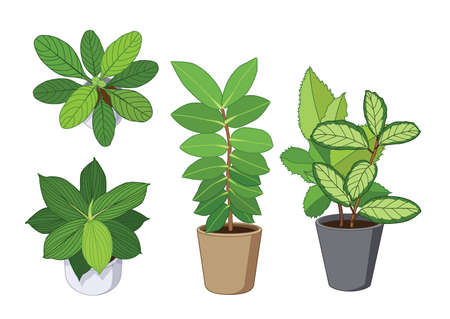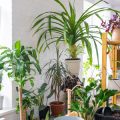1. Introduction to Indoor Hydroponic Gardening
Indoor hydroponic gardening is a fun, modern way to grow plants without soil—and it’s gaining popularity across the United States. Instead of using dirt, plants are grown in a nutrient-rich water solution that provides everything they need to thrive. This method makes it easier than ever for people living in apartments, homes with limited outdoor space, or areas with harsh climates to enjoy fresh herbs, veggies, and even fruits all year round.
One of the biggest reasons hydroponics is trending is its sustainability. It uses less water than traditional gardening and reduces the need for pesticides. Plus, you don’t have to worry about weeds or soil-borne diseases. With the right setup, you can grow food faster and with fewer resources—perfect for eco-conscious gardeners.
Hydroponics is also beginner-friendly. There are compact systems available that fit right on your kitchen counter or in a small corner of your home. Whether youre a seasoned gardener looking to try something new or a complete newbie wanting to grow your own salad greens, hydroponic gardening offers a clean and efficient option.
Here’s a quick comparison of traditional soil gardening vs. indoor hydroponic gardening:
| Feature | Soil Gardening | Hydroponic Gardening |
|---|---|---|
| Growing Medium | Soil | Water with nutrients |
| Space Needed | Outdoor garden/large containers | Compact indoor systems |
| Water Usage | High | Low (recycled water) |
| Pest/Disease Risk | Higher (soil-borne) | Lower (clean environment) |
| Growth Rate | Slower | Faster due to direct nutrient access |
This guide will explore the top 10 plants that are perfect for this kind of setup—plants that grow well in water-based environments and are easy to manage indoors. So whether youre craving fresh basil or crisp lettuce, youre in the right place to learn how to grow them hydroponically at home.
2. What to Look for in Indoor Hydroponic Plants
Not every plant thrives in a hydroponic setup, especially indoors where space and light can be limited. When choosing plants for your indoor hydroponic garden, it’s important to consider certain traits that make them more suitable for this soil-free environment. Here’s a quick guide to the key characteristics and growing needs that define a good hydroponic plant.
Key Characteristics of Ideal Hydroponic Plants
The best indoor hydroponic plants typically share some or all of these features:
- Compact Growth: Smaller plants take up less space, making them easier to manage indoors.
- Shallow Root Systems: Plants with shallow roots adapt better to nutrient solutions and limited root space.
- Fast Growing: Quick growers give you faster harvests and a more rewarding experience.
- High Yield in Small Spaces: Plants that produce well even when grown in confined areas are ideal.
- Tolerant of Indoor Conditions: Good candidates should do well with artificial lighting and stable indoor temperatures.
Essential Growing Requirements
Even the most hydroponic-friendly plants need proper conditions to thrive. Here’s what to keep in mind:
| Requirement | Description | Tips for Indoor Gardening |
|---|---|---|
| Light | Most hydroponic plants need 12–16 hours of light daily | Use full-spectrum LED grow lights to mimic sunlight |
| Nutrient Solution | A balanced mix of essential minerals like nitrogen, phosphorus, and potassium | Choose pre-mixed hydroponic nutrients based on plant type (leafy greens, fruiting plants, etc.) |
| Water Quality | Clean, pH-balanced water is crucial for nutrient absorption | Aim for a pH between 5.5 and 6.5; use filtered water if possible |
| Temperature & Humidity | Most plants prefer temps between 65–75°F with moderate humidity levels | Avoid placing systems near drafts or heating vents; use humidifiers if air is too dry |
| Air Circulation | Prevents mold growth and strengthens plant stems | Add a small oscillating fan near your setup for airflow |
Top Traits by Plant Type
If youre not sure where to start, heres a simple breakdown of plant types and their ideal traits for indoor hydroponics:
| Plant Type | Ideal Traits for Hydroponics |
|---|---|
| Leafy Greens (e.g., lettuce, spinach) | Fast-growing, low light needs, shallow roots |
| Herbs (e.g., basil, mint) | Aromatic, compact size, adaptable to containers |
| Fruiting Vegetables (e.g., cherry tomatoes) | Dwarf varieties preferred, need support structures and higher light levels |
Choosing the Right Plants Saves Time and Effort
Selecting the right plants from the start makes indoor hydroponic gardening much easier and more enjoyable. Whether youre growing fresh herbs for cooking or leafy greens for salads, knowing what works best in this environment will help you get great results without frustration.
Next up: Let’s explore some of the top-performing plants perfectly suited for indoor hydroponic systems!

3. Top 10 Plants That Thrive Indoors in Hydroponic Systems
If youre new to indoor hydroponic gardening or simply looking for the best plants to grow at home, this list is for you. Weve rounded up a mix of vegetables, herbs, and leafy greens that are not only easy to grow hydroponically but also deliver fresh, flavorful results right from your kitchen or living room.
Top 10 Hydroponic-Friendly Plants
| Plant | Type | Why It Thrives in Hydroponics |
|---|---|---|
| Lettuce | Leafy Green | Fast-growing, compact, and requires minimal maintenance |
| Basil | Herb | Loves consistent moisture and light; grows quickly year-round |
| Spinach | Leafy Green | Thrives in cooler temps and nutrient-rich water; ideal for salads |
| Kale | Leafy Green | Hardy and nutrient-dense; great for smoothies and cooking |
| Mint | Herb | Spreads easily in hydro systems; great for teas and desserts |
| Tomatoes (Cherry or Grape) | Vegetable (Fruit) | Loves consistent nutrients and controlled environment; needs support structure |
| Cilantro | Herb | Grows fast with good airflow; ideal for Latin-inspired dishes |
| Swiss Chard | Leafy Green | Tolerates variable temperatures; colorful and nutritious leaves |
| Dill | Herb | Loves plenty of light; pairs well with fish and pickles |
| Peppers (Small varieties) | Vegetable (Fruit) | Adds color and spice to meals; thrives with warmth and stable nutrients |
Quick Tips for Success with These Plants
- Lighting: Use full-spectrum LED grow lights to mimic sunlight indoors.
- Nutrients: Choose a high-quality hydroponic nutrient solution tailored to leafy greens or fruiting plants.
- Water Quality: Keep pH between 5.5–6.5 for most plants, and change the water regularly.
- Aeration: Make sure your system has adequate oxygen flow to prevent root rot.
- Spacing: Don’t overcrowd—give each plant enough space to grow without competing for light or nutrients.
Selecting the right plants is one of the easiest ways to ensure success in your indoor hydroponic garden. The ten listed above are not only beginner-friendly but also offer delicious rewards with minimal effort.
4. Tips for Maintaining a Healthy Indoor Hydroponic Garden
Keeping your indoor hydroponic garden in top shape year-round takes some care, but it’s totally manageable with the right know-how. Whether youre growing herbs like basil and mint or leafy greens like lettuce and spinach, here are some expert tips to help your plants thrive.
Nutrient Solutions: Feed Your Plants Right
Unlike soil gardening, hydroponic plants rely entirely on nutrient solutions for their food. Choose a high-quality hydroponic nutrient mix that matches the type of plant you’re growing. Most leafy greens prefer a balanced N-P-K ratio (Nitrogen-Phosphorus-Potassium), while fruiting plants may need more potassium and phosphorus once they start blooming.
Recommended Nutrient Ratios
| Plant Type | Ideal N-P-K Ratio |
|---|---|
| Lettuce, Spinach, Kale | 5-5-5 or 10-10-10 |
| Basil, Mint, Cilantro | 7-9-5 |
| Tomatoes, Peppers, Strawberries | 4-8-10 |
Lighting: Mimic Natural Sunlight Indoors
Since most homes don’t get enough natural light year-round, using grow lights is key for healthy hydroponic plants. LED grow lights are energy-efficient and provide full-spectrum light that mimics sunlight. Aim for 12–16 hours of light per day for most leafy greens and herbs.
Grow Light Tips:
- Place lights 6–12 inches above the plants for optimal coverage.
- Use a timer to maintain consistent lighting schedules.
- If plants look leggy or pale, increase light intensity or duration.
Water Quality: The Foundation of Hydroponic Success
Your water is more than just hydration—it’s the carrier of all nutrients. Start with filtered or distilled water if your tap water is hard or contains chlorine. Also, monitor pH and EC (electrical conductivity) levels regularly to keep your system balanced.
Water Quality Guidelines:
| Factor | Optimal Range | Why It Matters |
|---|---|---|
| pH Level | 5.5 – 6.5 | Keeps nutrients available for plant uptake. |
| EC (Electrical Conductivity) | 1.0 – 2.5 mS/cm (varies by plant) | Indicates nutrient concentration; too high can burn roots. |
| Water Temperature | 65°F – 75°F (18°C – 24°C) | Prevents root rot and supports oxygen absorption. |
Keep It Clean & Monitor Regularly
A clean system is a healthy system. Algae buildup and dirty reservoirs can harm your plants fast. Clean your grow trays, tubing, and tanks every couple of weeks. Also, check your plants daily for signs of pests, discoloration, or wilting—early intervention makes all the difference!
Pro Tip:
Add an air stone to your reservoir to increase oxygen levels in the water—your plants will thank you with faster growth and stronger roots.
By staying on top of nutrients, lighting, and water quality, youll set yourself up for success with any of the top 10 indoor hydroponic plants. Happy growing!
5. Common Mistakes to Avoid in Indoor Hydroponics
Starting an indoor hydroponic garden with popular plants like lettuce, basil, or strawberries can be exciting. But even with easy-to-grow plants, beginners often run into common issues that can slow down or even stop plant growth. Here are some frequent mistakes and how you can avoid them to enjoy a thriving indoor garden.
Overlooking Proper Light Requirements
Most of the top 10 hydroponic plants need plenty of light—especially herbs like basil and fruits like strawberries. Relying only on window sunlight may not be enough. Use LED grow lights that provide the right spectrum for plant growth, and adjust the height and duration according to each plant’s needs.
Incorrect pH Levels
Each plant has a preferred pH range to absorb nutrients effectively. If youre growing a mix of leafy greens and fruits, keeping the waters pH balanced is crucial. Use a digital pH meter and adjust using pH up or down solutions when necessary.
| Plant | Ideal pH Range |
|---|---|
| Lettuce | 5.5–6.5 |
| Basil | 5.5–6.5 |
| Tomatoes | 5.8–6.3 |
| Strawberries | 5.5–6.2 |
Poor Water Quality
Tap water may contain chlorine or other chemicals harmful to hydroponic systems. Always test your water quality before using it in your system. You can use filtered or distilled water if needed.
Not Monitoring Nutrient Levels
Nutrient imbalances are a common issue in hydroponics, especially when growing fast-growing plants like spinach or kale. Use an EC (electrical conductivity) meter to track nutrient concentration and follow feeding schedules specific to each plant type.
Inadequate Air Circulation
Even though youre gardening indoors, air circulation matters. Without it, mold or pests might show up, especially around plants like mint which love humidity. A small fan can help keep the air moving and reduce these risks.
Quick Tips to Avoid These Mistakes:
- Use timers for lights to ensure consistent light cycles.
- Check pH and EC levels at least twice a week.
- Clean your system components regularly to prevent algae buildup.
- Label each plant with its ideal conditions for easy reference.
Avoiding these common mistakes will make your indoor hydroponic experience smoother and more rewarding—especially when growing the top-performing plants suited for this method.

